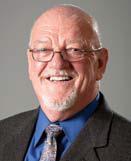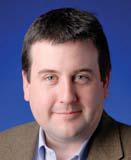Audio Loudness Still a Hot Topic
NEW YORK—Time flies. It’s been nearly four years since Congress passed H.R. 1084/S. 2847, commonly referred to as the CALM Act. International legislation requiring broadcasters to limit the variance in level between programming and advertised has also been established. Has loudness monitoring reached full maturity, or can we expect refinements to both laws and the technology that ensures broadcasters remain in compliance with them?
TV Technology asked a number of major industry players for their views on this subject, including Chris Shaw, executive vice president sales and marketing for Cobalt Digital, Andrew Sachs, vice president of product management at Volicon, Martin Winsemius, sustaining engineering manager at Wohler, Peter Pörs of Jünger, and Tim Carroll, chief technology officer for the Telos Alliance.
TV Technology:Was loudness monitoring a hot topic at the 2014 NAB show?
Chris ShawChris Shaw: Most U.S. broadcasters believe they provide CALM-compliant programming but that’s debatable. Besides a number of broadcasting groups adding loudness processing cards (Cobalt’s 9085, 9985 and options for cards in their possession), into their openGear frames, the initial impetus has slowed.

This is certainly not the case in many other areas of the world. Continual requests are being received for both broadband and loudness over IP solutions. At this time, Latin America, South Korea, Southeast Asia and India are growth markets for loudness processing. Broadcasters in these regions understand that they have to be compliant when transmitting programming to major markets such as U.S. and Europe. Interest from these markets is expected during the upcoming IBC Show.
Peter Pörs: Loudness is still a hot topic; a lot of misunderstanding remains, and a lot of misalignments. Make it pleasant for the ears and you will see; you are almost compliant to the recommendations!
Andrew Sachs: There is still confusion. Between measuring full mix or downmix, changes to the referenced BS-1770 version and actual compliant—but for the objectively loud commercials—we are not done with the task.
Get the TV Tech Newsletter
The professional video industry's #1 source for news, trends and product and tech information. Sign up below.
Martin Winsemius: My general impressions were that loudness is more understood now, and accepted as a necessary evil by our customers, a problem to be dealt with rather than avoided. For loud commercials in the U.S., and everything elsewhere, pushback to the provider is common practice now. It should have been all along, but now the agency enforcement threat outweighs business pressures.
TV Technology:What are the most common misperceptions regarding loudness monitoring?
Tim CarrollTim Carroll: One of the most common misconceptions about loudness metering is that the loudness value should never vary from the target. The only way to accomplish this is to remove the dynamic range (i.e. the life) from a mix; or to accidentally broadcast test tones. Neither is a career expanding move.

Another misconception is that a loudness meter is intended to replace all other metering; it is not. A loudness meter is like a speedometer in a car, you glance at it as needed, but mostly you focus on the road. Similarly, live loudness metering is integrated over a period of time—often 10 seconds—it is useless for seeing sudden changes but very useful for maintaining a comfortable balance.
Andrew SachsAndrew Sachs: One common misperception is that it is desirable to be alerted the instant an output is found to be too loud. The reality is that the ‘too high loudness’ of specific assets is usually an audio production chain problem that is best fixed with updated processes.

Another common misconception is that one cannot assume that being in compliance will translate to an absence of ‘loud’ commercials. In fact, the different loudness yardsticks used for content (speech) and commercials (full mix), combined with the ability to ‘deliver content low,’ enable fully compliant 5-6 dB jumps to occur at the transition from program to commercial.
Chris Shaw: There remains a misunderstanding that loudness is measured (averaged) over the length of a program or session, whether it be a commercial or complete production. In actuality loudness can be above or below the LKFS (LUFS) limit, but is averaged over the complete session. The term ‘loudness’ refers to not only the highest volume, but also the quieter segments of a session.
Peter PörsPeter Pörs: People are mixing the numbers of the peak world with loudness numbers. Both values are represented the same way. And that makes it difficult for some people to clearly identify what is what.

TV Technology: Is it possible that Congress, or international bodies, will further refine the regulations that govern loudness?
Andrew Sachs: It’s unlikely the algorithm (BS-1770-3) used for loudness measurement or the CALM Act itself will change significantly, but the application regarding gating (level or speech) and 5.1 tracks (downmix or full mix) specified in the ATSC A/85 RP is still under some flux.
Martin Winsemius: Taking into consideration a variety of factors—amplitude, frequency, and time for all channels within a program—the ITU BS.1770 LKFS (loudness K-weighted relative to full scale) standard is designed to yield an accurate loudness number that can be used effectively in content creation and content monitoring applications. The standard since has been refined, with the latest release being ITU BS.1770-3.
Peter Pörs: I don’t think another kind of regulation can improve the scenario. More important is that all people accept the new way of creating audio programs and that their “artist ego” is focused to audio quality and not to highest loudness. If everybody is trusting his native unstudied listening impression it should become easier to stay compliant with loudness recommendations or regulatory requirements.
TV Technology:What distinguishes your company’s product line from the competition?
Tim Carroll: Linear Acoustic and the entire Telos Alliance will continue to innovate products and technologies to support audio for broadcast, no matter how content is created, delivered, and consumed. Our unique value add is our people: we are proud to be part of every dimension.
Martin Winsemius: Hardware loudness metering/monitoring can take many forms, either standalone or integrated with other necessary audio functions, the latter being the strong suit of Wohler’s AMP2-16V audio and video monitoring unit. The AMP2-16V combines VU, PPM, and loudness metering configurable to popular or custom scales, Wohler’s renowned acoustic performance with a wealth of I/O conversion, routing, mixing, de-embedding and re-embedding functions at no extra charge.
Chris Shaw: From the initial days of the CALM Act and the need for loudness processing, we have worked closely with Linear Acoustic using the Aeromax algorithms, the Cobalt preferred product of choice and the best solution on the market. Also, we have listened to our customers, many of whom had major concerns regarding compliance. The combination has enabled us to provide loudness processing products to meet all budgetary and technical needs.
The Cobalt 9000 series COMPASS cards offer single processing for HD/SD-SDI requirements. The 9900 series of FUSION3G cards provides for multiple processing on a single card. A selection of processing including multiple stereo, 5.1 audio and added upmixing (Linear Acoustic upMax) are all available on these cards to meet endusers needs. Cobalt’s LMNTS provides for multichannel loudness processing over IP/ASI. This unit provides end-users financial and real estate rack economy.
Peter Pörs: All Jünger solutions are real-time algorithms. All of our circuits are wideband, no unwanted side effects, no pumping, no breathing, no distortion, no coloration.
Andrew Sachs: Volicon is unique in combining real-time monitoring, streaming A/V with a variety of measurements, asset-specific program loudness compliance reporting, affidavit production with burned-in measurements, and both full mix and downmix measurements. Together, these capabilities make the Observer Media Intelligence Platform the most complete, easy-to-use monitoring and compliance solution.
